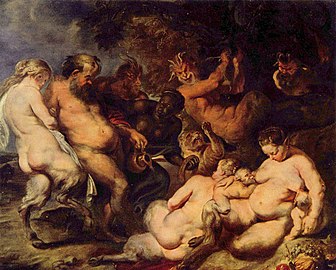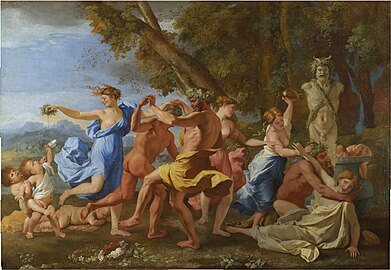
Proserpina or Proserpine is an ancient Roman goddess whose iconography, functions and myths are virtually identical to those of Greek Persephone. Proserpina replaced or was combined with the ancient Roman fertility goddess Libera, whose principal cult was housed in the Aventine temple of the grain-goddess Ceres, along with the wine god Liber.
Year 186 BC was a year of the pre-Julian Roman calendar. At the time it was known as the Year of the Consulship of Albinus and Philippus. The denomination 186 BC for this year has been used since the early medieval period, when the Anno Domini calendar era became the prevalent method in Europe for naming years.
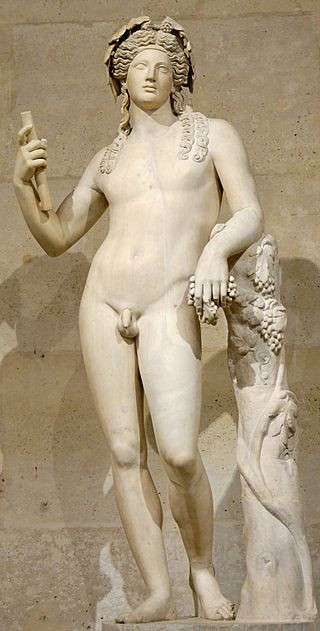
In ancient Greek religion and myth, Dionysus is the god of wine-making, orchards and fruit, vegetation, fertility, festivity, insanity, ritual madness, religious ecstasy, and theatre. He was also known as Bacchus by the Greeks for a frenzy he is said to induce called baccheia. As Dionysus Eleutherius, his wine, music, and ecstatic dance free his followers from self-conscious fear and care, and subvert the oppressive restraints of the powerful. His thyrsus, a fennel-stem sceptre, sometimes wound with ivy and dripping with honey, is both a beneficent wand and a weapon used to destroy those who oppose his cult and the freedoms he represents. Those who partake of his mysteries are believed to become possessed and empowered by the god himself.

In ancient Roman religion and mythology, Liber, also known as Liber Pater, was a god of viticulture and wine, male fertility and freedom. He was a patron deity of Rome's plebeians and was part of their Aventine Triad. His festival of Liberalia became associated with free speech and the rights attached to coming of age. His cult and functions were increasingly associated with Romanised forms of the Greek Dionysus/Bacchus, whose mythology he came to share.

In Ancient Greece a thyrsus or thyrsos was a wand or staff of giant fennel covered with ivy vines and leaves, sometimes wound with taeniae and topped with a pine cone, artichoke, fennel, or by a bunch of vine-leaves and grapes or ivy-leaves and berries, carried during Hellenic festivals and religious ceremonies. The thyrsus is typically associated with the Greek god Dionysus, and represents a symbol of prosperity, fertility, and hedonism similarly to Dionysus.

In modern usage, an orgy is a sex party where guests freely engage in open and unrestrained sexual activity or group sex.
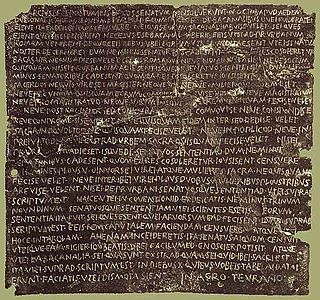
The senatus consultum de Bacchanalibus is a notable Old Latin inscription dating to 186 BC. It was discovered in 1640 at Tiriolo, in Calabria, southern Italy. Published by the presiding praetor, it conveys the substance of a decree of the Roman Senate prohibiting the Bacchanalia throughout all Italy, except in certain special cases which must be approved specifically by the Senate.

The senatus consultum ultimum is the modern term given to resolutions of the Roman Senate lending its moral support for magistrates to use the full extent of their powers and ignore the laws to safeguard the state.
Paculla Annia was a Campanian priestess of Bacchus. She is known only through the Roman historian Livy's account of the introduction, growth and spread of unofficial Bacchanalia festivals, which were ferociously suppressed in 186 BC under threat of extreme penalty.
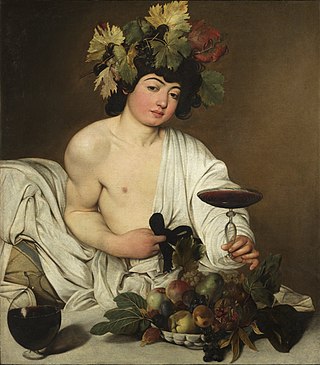
The Dionysian Mysteries were a ritual of ancient Greece and Rome which sometimes used intoxicants and other trance-inducing techniques to remove inhibitions and social constraints, liberating the individual to return to a natural state. It also provided some liberation for men and women marginalized by Greek society, among which were slaves, outlaws, and non-citizens. In their final phase the Mysteries shifted their emphasis from a chthonic, underworld orientation to a transcendental, mystical one, with Dionysus changing his nature accordingly. By its nature as a mystery religion reserved for the initiated, many aspects of the Dionysian cult remain unknown and were lost with the decline of Greco-Roman polytheism; modern knowledge is derived from descriptions, imagery and cross-cultural studies.

As the Roman Republic, and later the Roman Empire, expanded, it came to include people from a variety of cultures, and religions. The worship of an ever increasing number of deities was tolerated and accepted. The government, and the Romans in general, tended to be tolerant towards most religions and religious practices. Some religions were banned for political reasons rather than dogmatic zeal, and other rites which involved human sacrifice were banned.

In ancient Roman religion, the Liberalia was the festival of Liber Pater and his consort Libera. The Romans celebrated Liberalia with sacrifices, processions, ribald and gauche songs, and masks which were hung on trees.
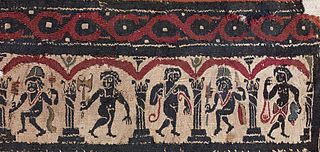
The cult of Dionysus was strongly associated with satyrs, centaurs, and sileni, and its characteristic symbols were the bull, the serpent, tigers/leopards, ivy, and wine. The Dionysia and Lenaia festivals in Athens were dedicated to Dionysus, as well as the phallic processions. Initiates worshipped him in the Dionysian Mysteries, which were comparable to and linked with the Orphic Mysteries, and may have influenced Gnosticism. Orpheus was said to have invented the Mysteries of Dionysus. It is possible that water divination was an important aspect of worship within the cult.

In ancient Greek religion, an orgion was an ecstatic form of worship characteristic of some mystery cults. The orgion is in particular a cult ceremony of Dionysos, celebrated widely in Arcadia, featuring "unrestrained" masked dances by torchlight and animal sacrifice by means of random slashing that evoked the god's own rending and suffering at the hands of the Titans. The orgia that explained the role of the Titans in Dionysos's dismemberment were said to have been composed by Onomacritus. Greek art and literature, as well as some patristic texts, indicate that the orgia involved snake handling.
Quintus Marcius Philippus, also Quintus Marcius L. f. Q. n. Philippus, was a Roman consul in 186 BC and again in 169 BC.
Spurius Postumius Albinus was a politician of ancient Rome, of patrician rank, of the 2nd century BC. He was praetor peregrinus in 189 BC, responsible for Roman interests in foreign affairs; and consul in 186 BC. In his consulship the Senatus consultum de Bacchanalibus was passed, reforming the mystery cult of Bacchus in Rome and among her close allies on the Italian mainland. In Livy's account, this was a reaction to various abominable crimes committed by members of the cult, and its threat to the Roman state. More likely, the legislation represents an attempt by Postumius and the senate to impose traditional Roman values and collective authority over a well organised, unofficial civil and religious association that seemed dangerously popular, widespread and potentially subversive. The legislation followed close after a particularly traumatic and turbulent period in Rome's history; Postumius was also an augur, which gave him a degree of religious authority. He died in 179 BC at an advanced age.

The Aventine Triad is a modern term for the joint cult of the Roman deities Ceres, Liber and Libera. The cult was established c. 493 BC within a sacred district (templum) on or near the Aventine Hill, traditionally associated with the Roman plebs. Later accounts describe the temple building and rites as "Greek" in style. Some modern historians describe the Aventine Triad as a plebeian parallel and self-conscious antithesis to the Archaic Triad of Jupiter, Mars and Quirinus and the later Capitoline Triad of Jupiter, Minerva and Juno. The Aventine Triad, temple and associated ludi served as a focus of plebeian identity, sometimes in opposition to Rome's original ruling elite, the patricians.

A senatus consultum is a text emanating from the senate in Ancient Rome. It is used in the modern phrase senatus consultum ultimum.
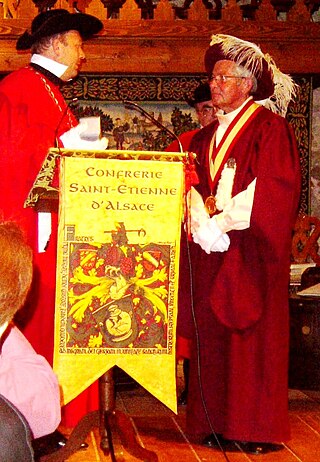
A Bacchanalian fraternity is a fraternal society of professional or amateur aficionados of wine and perhaps other alcoholic beverages, typically promoting the wines of represented regions, such as wines from France and Germany. The term derives from Bacchus, the Roman equivalent of Dionysus, god of wine and intoxication.

Hispala Faecenia was a freedwoman and rich courtesan from ancient Rome involved in giving a testimony that helped put a stop to the Bacchanalian scandal of 186 BCE. Hispala's role in the Bacchanalian scandal was to provide information on exactly what happened at the Bacchanalia.



